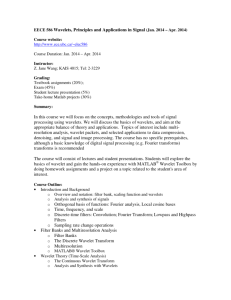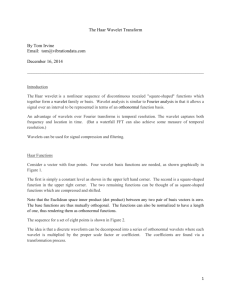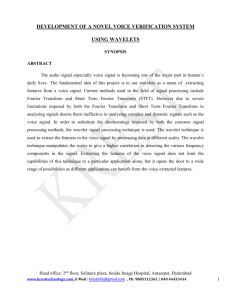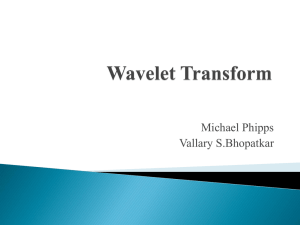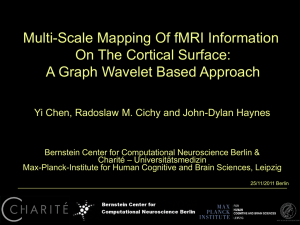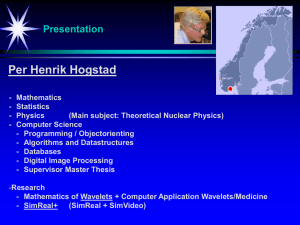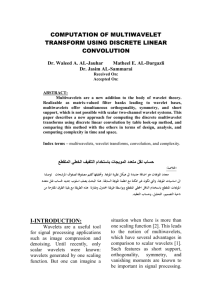WhatisaW
advertisement
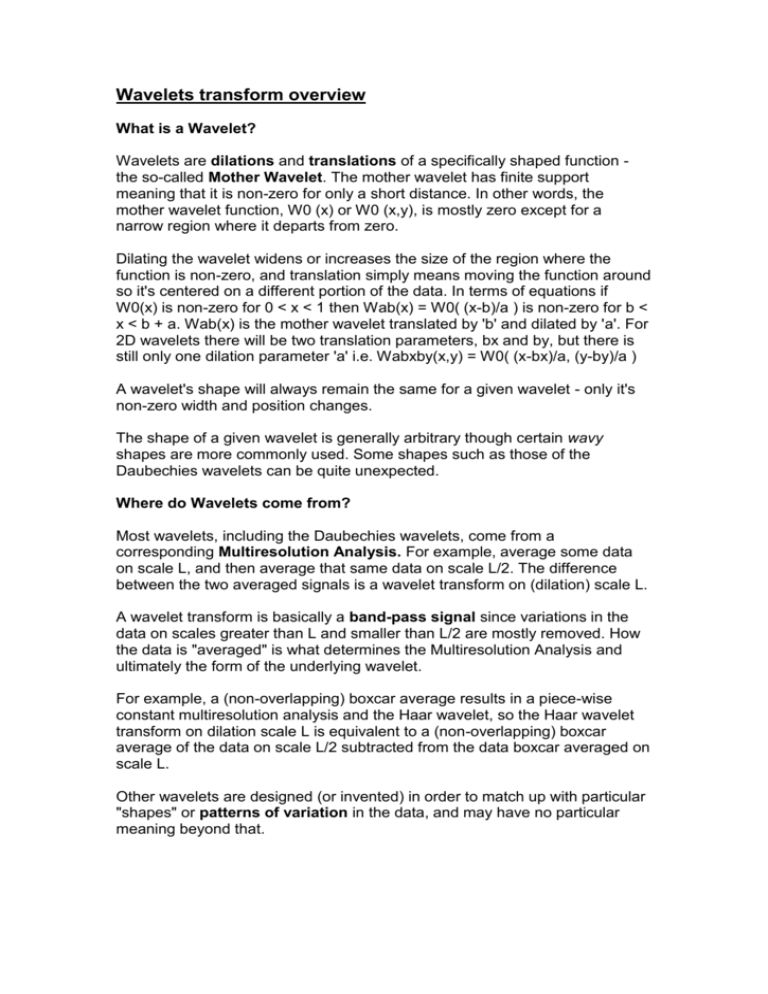
Wavelets transform overview What is a Wavelet? Wavelets are dilations and translations of a specifically shaped function the so-called Mother Wavelet. The mother wavelet has finite support meaning that it is non-zero for only a short distance. In other words, the mother wavelet function, W0 (x) or W0 (x,y), is mostly zero except for a narrow region where it departs from zero. Dilating the wavelet widens or increases the size of the region where the function is non-zero, and translation simply means moving the function around so it's centered on a different portion of the data. In terms of equations if W0(x) is non-zero for 0 < x < 1 then Wab(x) = W0( (x-b)/a ) is non-zero for b < x < b + a. Wab(x) is the mother wavelet translated by 'b' and dilated by 'a'. For 2D wavelets there will be two translation parameters, bx and by, but there is still only one dilation parameter 'a' i.e. Wabxby(x,y) = W0( (x-bx)/a, (y-by)/a ) A wavelet's shape will always remain the same for a given wavelet - only it's non-zero width and position changes. The shape of a given wavelet is generally arbitrary though certain wavy shapes are more commonly used. Some shapes such as those of the Daubechies wavelets can be quite unexpected. Where do Wavelets come from? Most wavelets, including the Daubechies wavelets, come from a corresponding Multiresolution Analysis. For example, average some data on scale L, and then average that same data on scale L/2. The difference between the two averaged signals is a wavelet transform on (dilation) scale L. A wavelet transform is basically a band-pass signal since variations in the data on scales greater than L and smaller than L/2 are mostly removed. How the data is "averaged" is what determines the Multiresolution Analysis and ultimately the form of the underlying wavelet. For example, a (non-overlapping) boxcar average results in a piece-wise constant multiresolution analysis and the Haar wavelet, so the Haar wavelet transform on dilation scale L is equivalent to a (non-overlapping) boxcar average of the data on scale L/2 subtracted from the data boxcar averaged on scale L. Other wavelets are designed (or invented) in order to match up with particular "shapes" or patterns of variation in the data, and may have no particular meaning beyond that. How are Wavelets used? Wavelets are best used when the data variations are intermittent or nonperiodic. For example, an early, common use of wavelets was for seismic analysis where the data representing the movement of the earth's crust includes highly sporadic fluctuations. Wavelets can be used to determine where in the data and on what scale the strongest variations in the data occur. Wavelets are used to identify events in the data, which in turn can be sampled and then studied in more detail. The Multiresolution Analysis aspect of wavelets is extremely useful for efficiently visualizing data variations on many different scales. This allows for zooming in and out - in to see a leaf on a tree and then back out to see the whole forest. This is helpful when there are millions of data points and variations occur on all of the resolved scales - generally the case in nature. Wavelets are useful for calculating averaged global spectra because they are inherently pre-smoothed. Meaning that if you've ever calculated raw Fourier spectra they usually come out quite noisy and require some sort of band averaging in order to easily interpret. Wavelet spectra are inherently "band-averaged." One useful application of Wavelets includes Wavelet Cospectra wherein wavelet transforms are applied simultaneously to multiple variables. Wavelet Cospectra and more generally cross-wavelet transforms can be used to identify localized correlations between different variables. Wavelet applications in medical signal analysis Over recent years, wavelet transforms have played an increasingly important role in the medical signal analysis. Wavelet transform analysis has been applied to a wide variety of biomedical signals including: the ECG, EEG, EMG, Echocardiograms, MRI Images, clinical sounds-arterial bruits, heart sounds, breath sounds, respiratory patterns, blood pressure trends, and DNA sequences. The two plots below show a short segment of ECG containing normal sinus rhythm together with its associated wavelet transform scalogram. The QRS complex of the waveform is evident from the conical structures in the scalogram, converging to the high frequency components of the RS spike. The P and T waves are also labelled in the plot. This figure highlights the wavelet transform's ability to pick out short duration, high frequency components in the time-frequency plane. An equivalent short time Fourier transform (STFT) spectogram smears this short duration information due to its fixed width window. The following plots show an ECG signal before and after the wavelet transform using our software.

